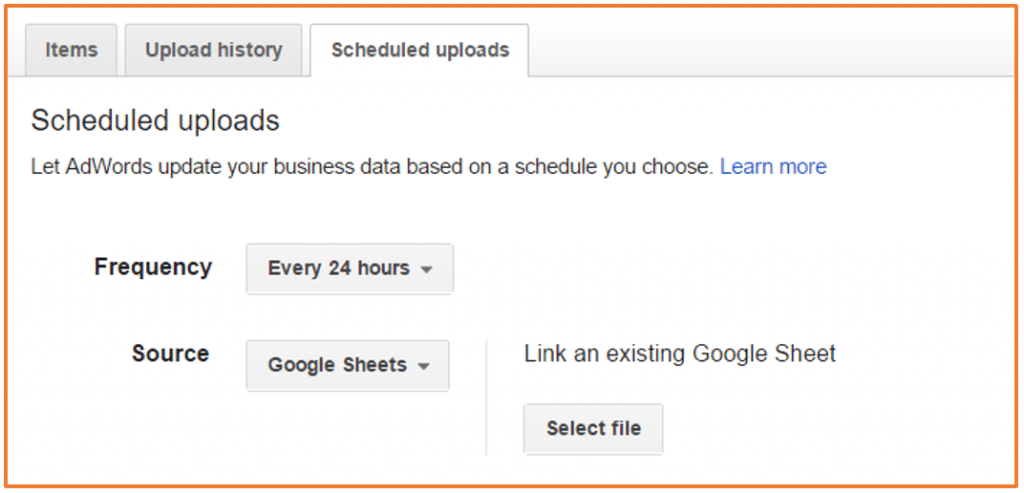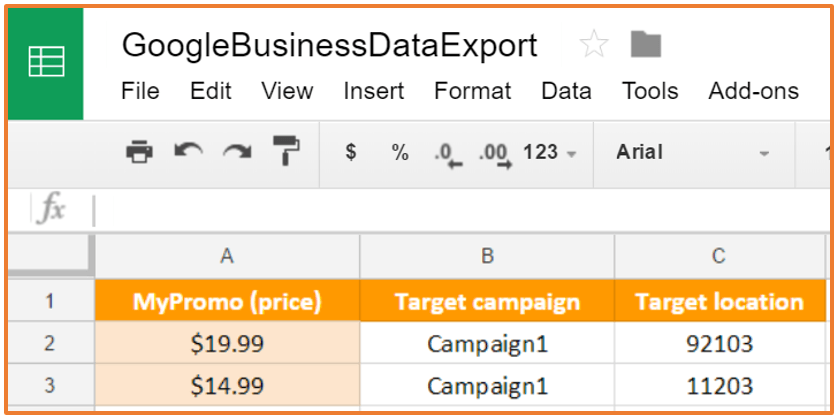Google Ads has emerged as a powerful tool for digital marketers, offering the ability to craft targeted PPC campaigns that reach a desired audience. With the integration of Google Ads into Google Sheets, marketers now have a powerful combination for monitoring, analyzing, and optimizing ad performance seamlessly. Understanding this connection, and using it to its full potential, is crucial for those looking to maximize the impact of their digital marketing strategies.
Through this integration, data-driven decision-making becomes easier and more organized, enabling marketers to draw actionable insights and refine their campaigns for better results. Google Sheets and Google Ads work together to make your organization more efficient and more successful. This feature allows users to import Google Sheets external data into Google ads business data.
So, what does this dynamic duo mean for you? It means unlimited options for serving automated and dynamic search ads. Google Ads Business data is where you provide and manage data sources for ads, extensions, and targeting. This Business data section allows you to quickly review the upload history and the status of your ads. This also gives you the ability to evaluate overall clicks, impressions, and campaigns associated with your Google Ads account.
Benefits of Linking Google Ads with Google Sheets
The integration of Google Ads with Google Sheets presents a handful of advantages for businesses and marketers aiming to optimize their advertising efforts. By connecting these two tools, you can unlock enhanced capabilities for data management, reporting, and analysis. Below, we outline the key benefits of connecting Google Ads data with Google Sheets.
1. Centralized Data Management
By connecting Google Ads to Google Sheets, all your advertising data is centralized within a single, accessible platform. This consolidates information from various campaigns, making it easier to manage and navigate through your advertising metrics and insights.
2. Simplified Reporting Processes
Linking Google Ads to Google Sheets automates the flow of data into thorough reports. It enables customized reporting that saves time and reduces the risk of manual entry errors, ensuring that your reports are always up-to-date and accurate.
3. Potential for Real-Time Analytics & Decision Making
Through the process of connecting Google Ads to Google Sheets, you can often set up the infrastructure for real-time analytics. This immediate data access allows for quick decision making, letting you adjust and improve campaigns on the fly to maximize advertising ROI.
4. Enhanced Visualization & Accessibility
The connection of Google Ads and Google Sheets enhances data visualization capabilities. Transform raw data into in-depth charts and graphs directly in your Sheets, making it more interpretable and accessible at all levels.
Customized Solutions
The implementation of this dynamic update can be as simple or complex as you make it. In its most basic form, you can use the Google Ads to Google Sheets data integration to change just one small element within your ad.
For something more extensive, you can utilize formulas and Google Scripts to make a truly dynamic and automated advertisement. Use the following links to learn more information about these topics:
How to Download Google Ads to Google Sheets
Installing the Google Ads add on for Google Sheets is very easy. All you have to do is download the add-on to your Google account and activate it. Be sure to follow these steps:
- Go to Google Sheets (make sure you’re using the right Google account.) This web app can be found by going to sheets.google.com, or you can access it in your Google Drive.
- Click the plus sign located under “Start a new spreadsheet.” This will appear in a small white box with the word “Blank” underneath it.
- From the top menu, select Add-ons near the right side of the toolbar menu. This is where you can find a list of the add-ons for your account.
- Click Get add-ons at the bottom of the drop-down list. This is where you go to install new add-ons.
- A window will appear. Enter “Google Ads” into the search bar at the top of the screen.
- Click Enter.
- Select the add-on called “Google Ads.” This is the first option you see on the left side of the page.
- Click the long blue bar labeled “Install”, which is found near the top center of the window.
You’ll then see a list of permissions. After reviewing them, select Allow to install the add-on. This new tool can now be found in the Add-ons list in your Google Sheets toolbar.
How to Link Google Ads to Google Looker Studio
Looker Studio is where all of your vital data makes it home. In order for your Google Ads account to utilize these valuable metrics, the integration must be set up correctly. Be sure to follow these steps to link these two Google accounts:
- Sign-in to Looker Studio. You can access the platform by going to lookerstudio.google.com.
- In the top left corner of the screen, click the plus sign next to “Create”, then choose Data Source from the drop-down menu. This allows you to choose where you would like to pull data.
- Select the Google Ads connector. This should be the option you see next to the Google Analytics tool. This integrates your Google Ads account with Looker Studio.
- If a message appears prompting you to grant Looker Studio access to your account, click AUTHORIZE. (Note: You can revoke this access at any time.) This page explains how Looker Studio will be accessing your account and your data.
- Choose ALL ACCOUNTS
- Select the account you would like to use. You can search for them by name or account ID.
- Click Overall Account Fields.
- At the top right side of the screen, click CONNECT.
- The data source field will populate.
- The data source is now integrated with your data set.
Data Visualization with Google Sheets Charts
To fully access the potential of connecting Google Ads to Google Sheets, the ability to visualize your data is essential. Charts offer a clear, concise way to present your advertising performance and export meaningful insights. Transforming complex data sets into visual representations helps recognize trends, patterns, and outliers that might not be immediately apparent in rows of figures.
The first step in data visualization is selecting the right chart type that matches the story you want to tell. Google Sheets provides a variety of chart options like line, bar, pie, and scatter plots to accommodate different kinds of data presentations. For instance, a line chart might be best for tracking clicks and impressions over time, while a pie chart could highlight the share of traffic brought by different campaigns.
Google Sheets allows extensive customizations to tailor charts according to your presentation needs. You can change colors, adjust labels, set axis titles, and apply gridlines to make charts more readable. Customizing your charts ensures that the key metrics stand out and your goal gets the focus it deserves.
New Google Ads Account Features
With the integration of Google Ads and Google Sheets, your Google Ads account will look a little different. When you head over to the Business data section of your Google Ads account, you’ll see a table with your data. Ad customizer, ad extension, location targeting, and dynamic display ad data can all appear on this page.

While Google previously introduced different versions of dynamic ad capabilities, it wasn’t on this level. Sure, we had Dynamic Keyword Insertion (DKI), which automatically pulled a user’s search query into an ad. We even had Google Ads Business data that allowed us to utilize ad customizations. This feature uses a parameter that automatically leverages information from Business data in ads, such as promotional prices.
Automation Capabilities
Before the Google Ads to Google Sheets integration, if you had a promotional price change, you had to update it in Excel, then re-upload it to Google Ads. For some of us, promotions needed to be changed daily, making this a very time-consuming task.This is when the Google Ads to Google Sheets solution comes in to save the day.
As Google Sheets and Google Ads work together to allow the automation of the import process (every 6 hours if you want), you no longer need to lift a finger to make changes, such as a price adjustment. Instead of bouncing around from one platform to the next to simply change a price, now you can do so from only one software solution.Whoever is responsible for updating product prices can change them directly within a Google Sheet, or they can link Google Sheets to the source document used for updating pricing.

One of the best qualities of Google Sheets is that it comes with a plethora of Excel-based formulas and functions. It also includes Google Scripts, which allows you to build custom functions.
A wide variety of capabilities are available on Google Sheets, enabling you to connect external APIs, internal CRMs, scrape your own website data, and much more.Changing promotional ad prices is just one example of the many uses of this Google Ads Business data integration.
Paid Ad Example
Here’s another example that allows us to explore these capabilities even further:Imagine you own an international donation website called “helpthoseinneed.com” that has a mission to provide food for those less fortunate. Below is an example of your display ad that’s fully automated and dynamic:

The audience sees this ad, but they don’t realize what you did behind the scenes:
- You used a countdown parameter to end the ad at a designated date
- You scraped the donation page and used an Excel formula to get your percentage-to-goal
- You connected to openexchangerates.org’s API to convert your minimum donation ($5 USD) to Euros
- You customized this ad to use the right messaging to target the country of the target audience
- You imported your Google Analytics data into Google Sheets to see how many unique donations you’ve accumulated thus far
Allow the Professionals at Symphonic Digital to Manage Your Google Ads Account
While this new Google Sheets, Google Ads Business data integration can make your business that much more effective, there are many more tactics involved in a successful digital advertising campaign.If you’re looking for an experienced team to control your Google Ads account, look no further than Symphonic Digital. From ad design to copywriting, we know what it takes to create digital ads that lead to more conversations. Contact us today to see how we can help your business grow!







.png)






